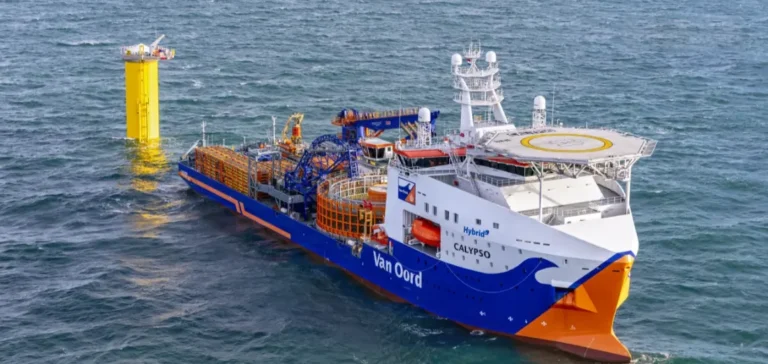Van Oord has finalised the laying, burial, termination and testing of 109 subsea cables at the Sofia offshore wind farm. The project represents a significant step in the development of large-scale offshore wind infrastructure, with more than 360 kilometres of cables installed in total.
First deployment of the Calypso vessel
This operation also marked the first operational deployment of the cable-laying vessel Calypso, specifically designed for offshore wind projects. Equipped with the latest generation technologies, Calypso was immediately mobilised for a new assignment following this debut campaign, highlighting the intensity of operations in the offshore sector.
For the burial of the cables, Van Oord deployed the Dig-It trencher, operated from the Subsea Viking vessel. This automated system ensured precise burial, essential for protecting the cables against subsea risks and long-term mechanical stresses.
Multi-support logistical mobilisation
The final phase of works, including cable termination and testing, was carried out using several walk-to-work vessels, mobilising teams specialised in complex offshore environments. The entire operation required close coordination between the various chartered maritime units for the project.
The Sofia offshore wind farm is located off the British coast, in the central North Sea. It is one of the largest offshore wind projects under development in the region, with a planned capacity of 1.4 GW.
Technical milestone in a growing market
Completion of the internal cabling phase represents a critical step before the progressive commissioning of the wind farm. It comes at a time of high demand for subsea cable-laying capacity, as offshore wind projects expand across Europe.
Van Oord stated that this achievement reflects smooth collaboration between the Calypso, Subsea Viking and walk-to-work support vessels. The Dutch company is thereby strengthening its position in the specialised offshore services segment, within a competitive market dominated by a few technical players.






















